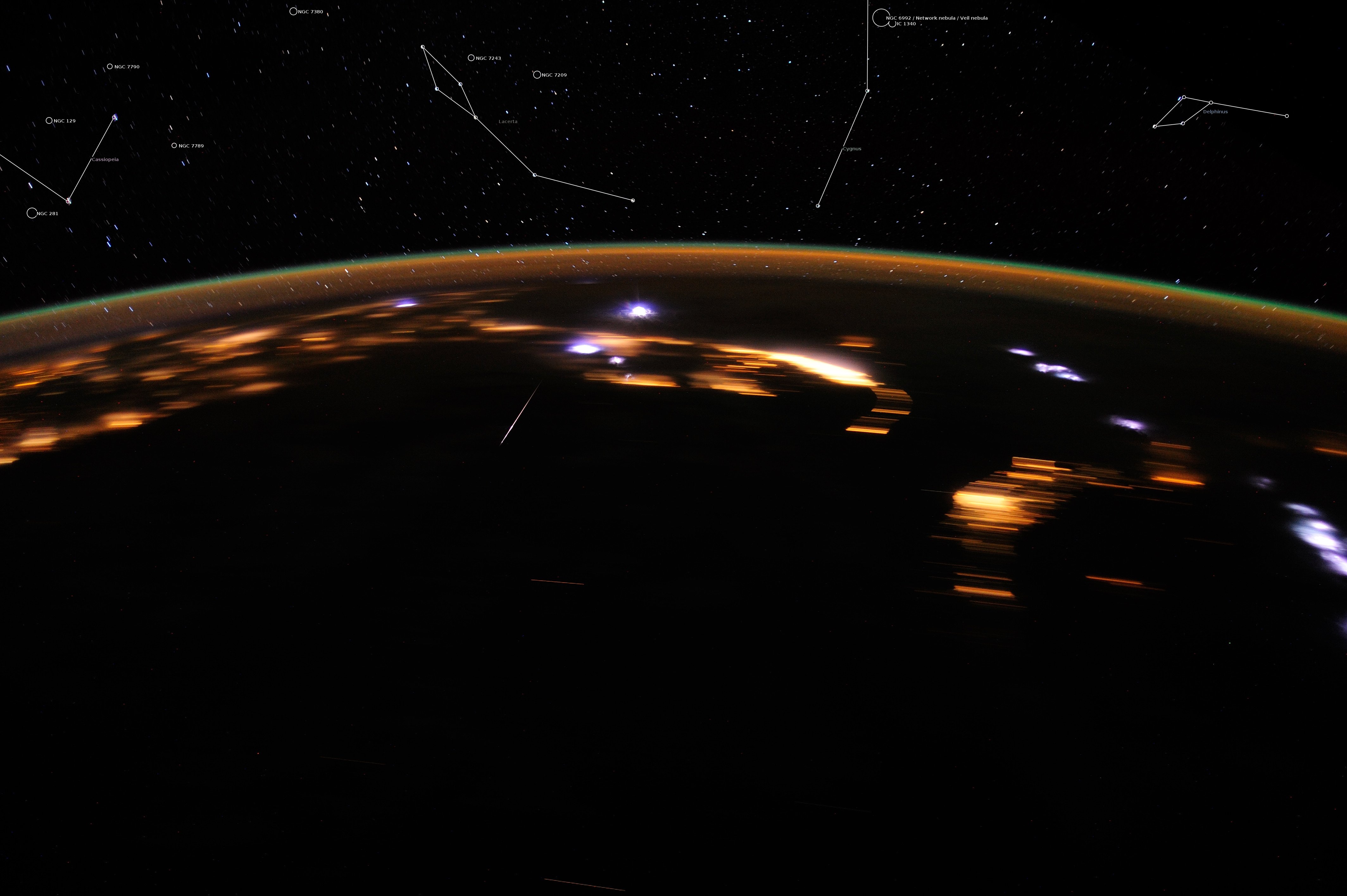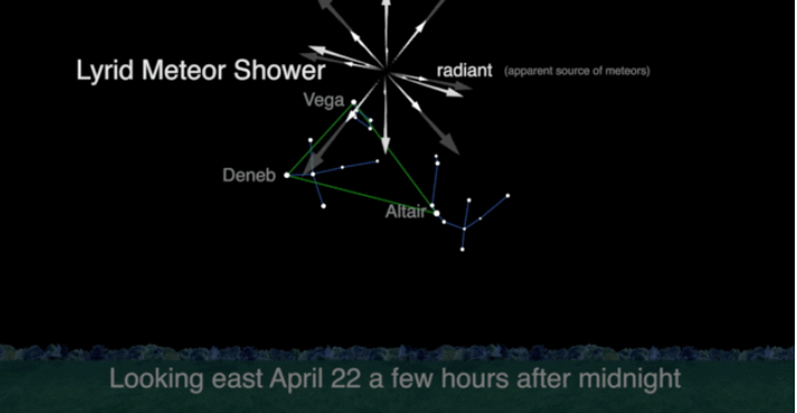You Can Still Catch an Earth Day Meteor Shower

Top off your Earth Day celebrations tonight (April 22) by watching a parade of falling stars: The Lyrid meteor shower peaked this morning about 8 a.m. EDT (1200 GMT), but the display will continue tonight, according to NASA.
The Lyrids appear every year around April 20 as Earth passes through the orbital path of Comet Thatcher. The small meteors left behind by the comet fall through the planet's atmosphere, putting on a stunning light show for skywatchers.
The prime viewing time for the Lyrids continues tonight and into Sunday morning (April 23), according to NASA. A few remaining Lyrids might even be visible in the early morning on Monday (April 24), according to Space.com skywatching columnist Joe Rao.
While the Lyrid meteor shower has at times produced as many as 90 meteors per hour, this year skywatchers can expect to see about 18-20 per hour during its peak. That number will be reduced on cloudy nights or in locations where light pollution is high.
The Lyrids are so named because they appear to emanate from the constellation Lyra, the Harp. (You can typically find Lyra by looking to the northeast of the bright, blue star Vega, one of the brightest stars in the northern sky this time of year.) In the Northern Hemisphere, the Lyrids' origin point will rise from the northwest after twilight, and reach a point high overhead after midnight.
Editor's note: If you snap an amazing photo of a Lyrid meteor that you'd like to share it with Space.com and our news partners for a story or gallery, you can send images and comments in to managing editor Tariq Malik at spacephotos@space.com.
Breaking space news, the latest updates on rocket launches, skywatching events and more!

Calla Cofield joined Space.com's crew in October 2014. She enjoys writing about black holes, exploding stars, ripples in space-time, science in comic books, and all the mysteries of the cosmos. Prior to joining Space.com Calla worked as a freelance writer, with her work appearing in APS News, Symmetry magazine, Scientific American, Nature News, Physics World, and others. From 2010 to 2014 she was a producer for The Physics Central Podcast. Previously, Calla worked at the American Museum of Natural History in New York City (hands down the best office building ever) and SLAC National Accelerator Laboratory in California. Calla studied physics at the University of Massachusetts, Amherst and is originally from Sandy, Utah. In 2018, Calla left Space.com to join NASA's Jet Propulsion Laboratory media team where she oversees astronomy, physics, exoplanets and the Cold Atom Lab mission. She has been underground at three of the largest particle accelerators in the world and would really like to know what the heck dark matter is. Contact Calla via: E-Mail – Twitter

